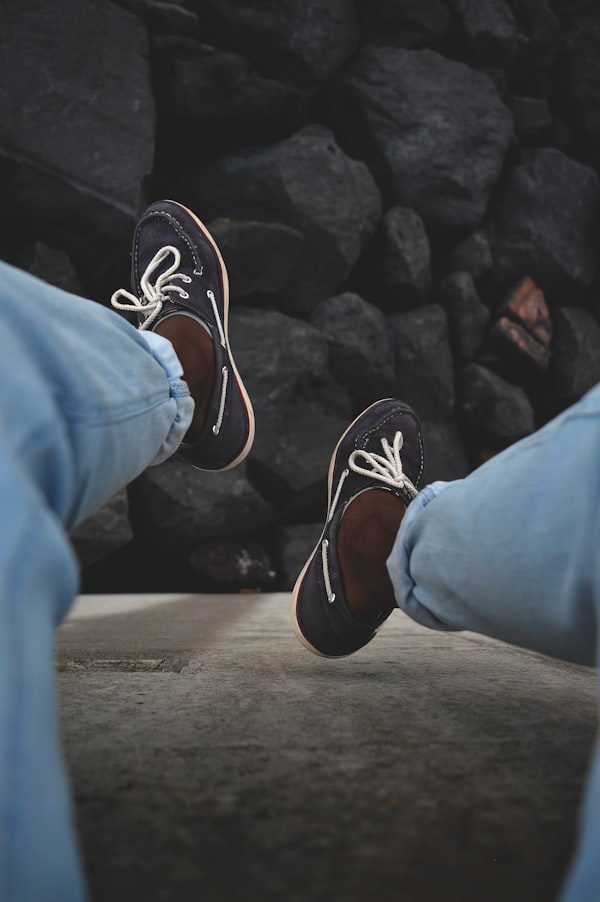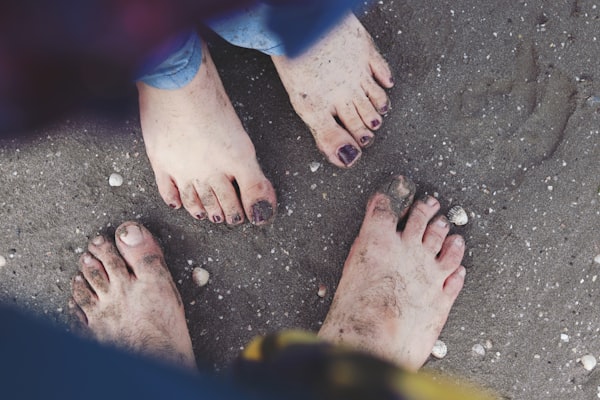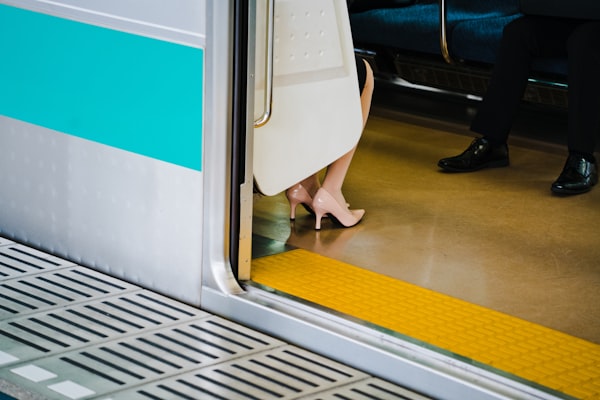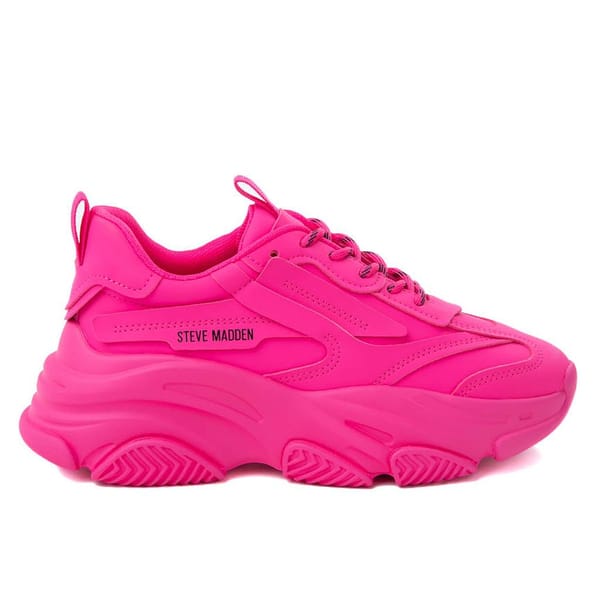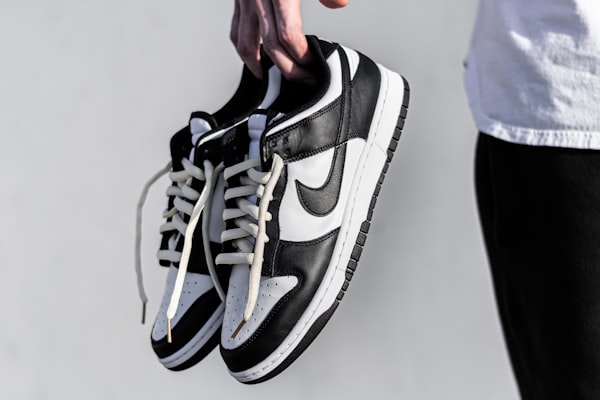Achilles Tendonitis is an overuse injury of the Achilles tendon, the band of tissue that connects calf muscles at the back of the lower leg to your heel bone. The Achilles tendon is used when walking, running, jumping, or pushing up on the toes, so the stress from repetitive or intense activities can lead to tendonitis.

Achilles Tendonitis is a condition frequently encountered by athletes, especially runners who abruptly intensify or prolong their running sessions, as well as by weekend sports enthusiasts or individuals who have recently embarked on exercise routines. In managing this condition, the selection of running shoes plays a pivotal role. Opting for the right running shoe can drastically reduce symptoms and facilitate healing. As such, footwear offers essential support, cushioning, and stability. These features work together to lessen the strain on the Achilles tendon, effectively easing pain and reducing inflammation, thereby proving to be an integral part of the recovery strategy for individuals suffering from Achilles Tendonitis.
Navigating the sea of running shoe options can be daunting. That's why we've taken the time to research and compile a selection of the top men's running shoes of 2024 specifically designed to combat Achilles Tendonitis and support your recovery journey. So, say goodbye to the frustration of persistent heel pain and restricted activity. And say hello to a future of pain-free strides and improved mobility.
How We Choose
To simplify the process, we conducted extensive research and consulted top industry experts to identify the key factors necessary for Achilles Tendonitis symptom relief and recovery. Our criteria included fit, features, brand reputation, and value.
Following an extensive evaluation of numerous brands and models, we have refined our selection to the top running shoes designed to offer comfort and support recovery from Achilles Tendonitis. Our detailed guide presents the reasons behind each shoe's selection and provides crucial information for consideration.
With our hard work, you don't have to stress about finding running shoes that won't prevent recovery or worsen your condition.
Our Top Picks
While the intricacies of selecting the ideal shoe—considering factors like support, cushioning, and fit—will be discussed in detail later, let's jump right into the shoes we've selected for Achilles Tendonitis sufferers.
Recognizing that Achilles Tendonitis symptoms can vary widely and understanding that each runner has unique needs, it's crucial to choose footwear that addresses your specific symptoms and enhances your running experience.
Our carefully selected recommendations aim to cater to these diverse requirements, ensuring that you find a shoe that supports your recovery journey and matches your running profile. You can dive into our selections knowing that each pick is thoughtfully chosen with your comfort and healing in mind.
*As an Amazon Associate, we earn a small commission from qualifying purchases at no cost to you.
Why It's FrontPage Worthy
This running shoe is highly recommended for sufferers of Achilles Tendonitis due to its plush arch support and medium toe box, which can be particularly beneficial for insertional Achilles Tendonitis. Its design incorporates synthetic overlays, an exoskeletal heel for superior support, and a forgiving fit in the forefoot to accommodate various foot shapes. This combination helps alleviate pressure on the Achilles tendon while providing a stable and comfortable environment for the foot during physical activity.
What You Should Know
- Brand Excellence: ASICS is celebrated for its commitment to innovation and quality in developing sports and lifestyle footwear and apparel. The brand stands out for its focus on incorporating advanced technologies, such as GEL cushioning, to enhance performance, comfort, and durability, making it a favorite among athletes and fitness enthusiasts worldwide. This dedication to pushing the boundaries of what athletic gear can provide has positioned ASICS as a leader in the industry, offering products supporting a healthy and active lifestyle.
- Materials: Made with a synthetic knit mesh upper, gel-cushioned footbed, and rubber outsole.
- Sizes and Widths: Offered in sizes 6 through 15, including half sizes and three width options.
- Colors and Finishes: Available in a wide range of colors, providing a range of options to suit different style preferences.
Why It's FrontPage Worthy
This running shoe is designed to support individuals with Achilles Tendonitis through its 12mm heel-to-toe drop, which effectively takes stress off the tendon. This model stands out for its sturdy heel counter, which securely holds the foot in place, minimizing unnecessary movement that could aggravate the Achilles tendon. Additionally, it boasts an upgraded lightweight upper for breathability and comfort during runs or daily activities. These features, combined with Mizuno's signature Wave technology for enhanced cushioning and stability, make it a top choice for those seeking to alleviate and prevent Achilles Tendonitis pain.
What You Should Know
- Brand Excellence: Mizuno stands out as an excellent brand due to its dedication to crafting high-quality athletic gear and sports equipment that combines innovative technology with traditional Japanese attention to detail. Their use of Wave technology in footwear, for instance, provides unmatched cushioning and stability, catering to both professional athletes and fitness enthusiasts. This blend of innovation and quality across various sports disciplines has established Mizuno as a trusted name in sports apparel and equipment, fostering performance and comfort.
- Materials: Crafted with a synthetic mesh upper, durable carbon rubber outsole, cushioned insole, and rubber outsole.
- Sizes and Widths: Offered in sizes 7 through 16, including half sizes and two width options.
- Colors and Finishes: Available in a wide range of colors, providing a range of options to suit different style preferences.
Why It's FrontPage Worthy
This running shoe is engineered to cater to the needs of Achilles Tendonitis sufferers, thanks to its advanced features aimed at providing maximum comfort and support. This model is renowned for its exceptional cushioning and stability, incorporating ASICS' GEL technology to absorb shock and reduce impact on the Achilles tendon. It also features a high-quality, breathable upper that ensures comfort and a snug fit, minimizing irritation while enhancing foot support. Furthermore, it is designed with a dynamic DuoMax Support System that enhances stability and support, making it ideal for those requiring extra care for their Achilles tendon.
What You Should Know
- Brand Excellence: ASICS is celebrated for its commitment to innovation and quality in the development of sports and lifestyle footwear and apparel. The brand stands out for its focus on incorporating advanced technologies, such as GEL cushioning, to enhance performance, comfort, and durability, making it a favorite among athletes and fitness enthusiasts worldwide. This dedication to pushing the boundaries of what athletic gear can provide has positioned ASICS as a leader in the industry, offering products supporting a healthy and active lifestyle.
- Materials: Made with a synthetic knit mesh upper, PureGel rearfoot, FF Blast Plus Eco cushioned footbed, and rubber outsole.
- Sizes and Widths: Offered in sizes 7 through 15, including half sizes and three width options.
- Colors and Finishes: Available in a wide range of colors, providing a range of options to suit different style preferences.
Why It's FrontPage Worthy
This running shoe is renowned for its exceptional cushioning and support, making it an ideal choice for individuals suffering from Achilles Tendonitis. It features a low heel-to-toe drop and a thick, soft sole that provides maximum shock absorption, crucial for reducing strain on the Achilles tendon. Additionally, the Bondi 8 includes a wide base for stability and a breathable upper to keep feet comfortable during long periods of wear. Its unique design offers protection and a smooth transition during walking or running, catering to those needing extra care for their Achilles tendon.
What You Should Know
- Brand Excellence: Hoka is renowned for its innovative approach to running shoes, focusing on oversized midsoles that offer unparalleled cushioning and support, making it a favorite among runners of all levels. Their commitment to providing lightweight, high-quality footwear with a distinctive design and exceptional performance capabilities has solidified Hoka's reputation as a brand that challenges conventional shoe design to enhance the running experience.
- Materials: Crafted with a synthetic mesh upper, breathable textile lining, removable cushioned insole, and rubber outsole.
- Sizes and Widths: Offered in sizes 7 through 14, including half sizes and two width options.
- Colors and Finishes: Available in a wide range of colors, providing a range of options to suit different style preferences.
Why It's FrontPage Worthy
This running shoe is specifically engineered for runners and individuals with Achilles Tendonitis, offering exceptional support and cushioning. It features ASICS' GEL technology for superior shock absorption, reducing the impact on the Achilles tendon. The shoe also boasts an external heel counter for enhanced rearfoot support, ensuring stability with every step. With its signature gel cushioning and a dynamic DuoMax Support System, this shoe enhances foot stability and comfort, making it suitable for those seeking relief from Achilles Tendonitis symptoms.
What You Should Know
- Brand Excellence: ASICS is celebrated for its commitment to innovation and quality in the development of sports and lifestyle footwear and apparel. The brand stands out for its focus on incorporating advanced technologies, such as GEL cushioning, to enhance performance, comfort, and durability, making it a favorite among athletes and fitness enthusiasts worldwide. This dedication to pushing the boundaries of what athletic gear can provide has positioned ASICS as a leader in the industry, offering products supporting a healthy and active lifestyle.
- Materials: Made with a synthetic knit upper, OrthoLite sockliner, FF BLAST cushioned midsole, and a rubber outsole.
- Sizes and Widths: Offered in sizes 7 through 16, including half sizes and three width options.
- Colors and Finishes: Available in a wide range of colors, providing a range of options to suit different style preferences.
Why It's FrontPage Worthy
This running shoe is renowned for its balanced cushioning and smooth transition, making it a solid choice for individuals with Achilles Tendonitis. It offers a soft yet responsive feel underfoot, which can help reduce the strain on the Achilles tendon during the heel strike-to-toe-off transition. Additionally, the shoe's engineered mesh upper provides breathability and a secure fit, while its DNA LOFT cushioning ensures a plush, comfortable ride without sacrificing responsiveness or durability. This combination of features makes it well-suited for everyday training and long distances, providing the necessary support and comfort for those dealing with Achilles Tendonitis.
What You Should Know
- Brand Excellence: Brooks is highly regarded for its focus on producing innovative running shoes that prioritize comfort, durability, and biomechanical efficiency, making it a leading choice for casual joggers and professional athletes. Their dedication to understanding runners' needs and implementing advanced technologies for improved performance and injury prevention has established Brooks as a brand committed to enhancing the running experience for individuals of all levels.
- Materials: Crafted with a synthetic air mesh upper, cushioned midsole, and rubber outsole.
- Sizes and Widths: Offered in sizes 7 through 15, including half sizes and four width options.
- Colors and Finishes: Available in a wide range of colors, providing a range of options to suit different style preferences.
Why It's FrontPage Worthy
This running shoe is designed to offer superior comfort and therapeutic support for individuals suffering from Achilles Tendonitis. Its innovative technology ensures stability and control during motion, making it ideal for reducing strain on the Achilles tendon. The shoe features a patented XPS technology that provides dynamic and stable forward motion while walking or running. Its high-quality construction and cushioning system offers excellent shock absorption, protecting the Achilles tendon from excessive stress. For a shoe that combines a lightweight feel with adequate support, it stands out with its breathable mesh upper and flexible outsole, providing excellent traction and a more natural stride. This shoe combines functionality with style, making it an ideal choice for those seeking both relief from discomfort and a shoe that fits well into an active lifestyle.
What You Should Know
- Brand Excellence: Xelero is celebrated for its unique integration of stability and cushioning in footwear, offering an innovative solution for individuals seeking enhanced motion control without sacrificing comfort. Their patented technology is designed to reduce the pressure and stress on joints during movement, making Xelero shoes particularly beneficial for those with specific foot conditions or needing extra support, establishing the brand's reputation for combining therapeutic benefits with modern shoe design.
- Materials: Made with a leather and mesh upper, EVA midsole, cushioned removable insole, and solid rubber outsole.
- Sizes and Widths: Offered in sizes 8 through 14, including half sizes and three width options.
- Colors and Finishes: Available in grey/black, suitable for most preferences.
Why It's FrontPage Worthy
This running shoe is designed with cutting-edge comfort features to alleviate discomfort for individuals with high arches suffering from Achilles Tendonitis. Its orthotic support, ergonomic cushioning, and lightweight sole provide essential relief and support. The unique tie-less lacing system allows for easy on and off, making it highly convenient for those with mobility issues. Moreover, the shoe's soft, seam-free interior lining minimizes pressure points and friction against the skin, ensuring a comfortable fit throughout the day.
What You Should Know
- Brand Excellence: Orthofeet is renowned for its focus on orthopedic shoes designed to provide relief and comfort for various foot conditions, employing advanced ergonomic designs and cushioning technology. Their wide range of footwear caters to individuals with diabetes, arthritis, plantar fasciitis, and other foot-related issues, offering innovative features like anatomical arch support and a seamless interior to enhance foot health and mobility.
- Materials: Crafted with a stretchable knitted synthetic upper, rubber outsole, and bungee closure system.
- Sizes and Widths: Offered in sizes 7 through 14, including half sizes and two width options.
- Colors and Finishes: Available in a small range of neutral colors, suitable for many preferences.
Why It's FrontPage Worthy
This running shoe is optimized for those with Achilles Tendonitis, offering a balance of cushioning and support to alleviate discomfort. This model features an updated PWRRUN formula, enhancing its responsiveness and durability while maintaining a lightweight feel. Its FORMFIT design contours the foot of neutral arches, providing a personalized fit that reduces strain on the Achilles tendon. The engineered mesh upper also ensures breathability, keeping feet cool and comfortable. With its generous cushioning and supportive structure, this running shoe is ideal for daily training and long runs, offering protection and comfort for sensitive tendons.
What You Should Know
- Brand Excellence: Saucony is acclaimed for its dedication to creating innovative running shoes that prioritize performance, comfort, and durability, making it a favorite among runners of all levels. The brand's commitment to understanding the biomechanics of running, combined with the use of advanced materials and technologies, ensures that Saucony footwear helps runners achieve their best while protecting them from injury.
- Materials: Made with a synthetic upper, pillowy sockliner, and rubber outsole.
- Sizes and Widths: Offered in sizes 7 through 16, including half sizes and two width options.
- Colors and Finishes: Available in a wide range of colors, providing a range of options to suit different style preferences.
Why It's FrontPage Worthy
This running shoe is designed to offer superior support and stability, making it an excellent choice for individuals suffering from Achilles Tendonitis. It features a wide base for enhanced stability and a rocker profile designed to reduce stress on the Achilles tendon during movement. The shoe also incorporates a rigid heel counter and a cushioned footbed for additional support and comfort. Its durable construction and arch support make it suitable for daily wear, providing the necessary support for those with flat feet or who require additional help managing Achilles Tendonitis discomfort. This combination of features ensures both protection and comfort for sensitive feet.
What You Should Know
- Brand Excellence: Propét is distinguished for its emphasis on offering a broad range of sizes and widths in footwear, ensuring a perfect fit for almost any foot, which is particularly beneficial for those with special foot care needs. Their dedication to comfort, durability, and support, especially in walking shoes and therapeutic footwear, has made Propét a go-to brand for individuals seeking reliable, comfortable shoes designed for everyday life and specific foot conditions.
- Materials: Crafted with a suede upper, padded removable footbed, rubber outsole, and speed-lacing closure system.
- Sizes and Widths: Offered in sizes 5 through 17 and four width options.
- Colors and Finishes: Available in a good range of neutral colors, suitable for many preferences.
Why It's FrontPage Worthy
This running shoe is designed with Achilles Tendonitis sufferers in mind, featuring the brand's signature Fresh Foam midsole for plush cushioning that delivers exceptional shock absorption with each step. This model boasts a supportive fit that gently secures the heel and midfoot, reducing stress on the Achilles tendon. The engineered mesh upper provides breathable, flexible support, while the Ultra Heel design hugs the back of the foot for a snug, supportive fit. This combination of cushioning, support, and stability makes it an excellent choice for those seeking relief from Achilles Tendonitis discomfort during all their athletic pursuits.
What You Should Know
- Brand Excellence: New Balance stands out as an excellent brand due to its commitment to combining innovation with comfort, offering a wide range of athletic and casual footwear designed to meet the specific needs of various foot types and athletic activities. Their emphasis on producing high-quality, technically advanced shoes with superior cushioning, stability, and support for different arch types has made them a trusted choice among amateur and professional athletes worldwide.
- Materials: Made with an air mesh upper, foam midsole, and durable rubber outsole.
- Sizes and Widths: Offered in sizes 7 through 16, including half sizes and four width options.
- Colors and Finishes: Available in a wide range of colors, providing a range of options to suit different style preferences.
Why It's FrontPage Worthy
This running shoe is engineered to offer superior comfort and protection for individuals with Achilles Tendonitis, featuring a design that emphasizes stability and support. Its unique construction includes a biomechanically engineered multi-density midsole, providing targeted cushioning and promoting optimal alignment, crucial for reducing strain on the Achilles tendon. Additionally, the shoe offers a spacious toe box to prevent compression, while the padded heel counter ensures a secure fit that minimizes slippage and protects the Achilles. With its durable, traction-focused outsole, this running shoe is ideal for navigating various terrains, making it a versatile choice for those seeking relief and support for Achilles Tendonitis.
What You Should Know
- Brand Excellence: APEX stands out as an excellent brand due to its dedication to creating footwear that combines therapeutic detailing with athletic functionality, catering to individuals with foot health concerns. Their shoes are distinguished by innovative features such as biomechanically engineered insoles, high levels of cushioning, and supportive designs that address a wide range of orthopedic needs, making them a preferred choice for those seeking both comfort and performance.
- Materials: Crafted with a leather and mesh upper, carboplast footbridge, and slip-resistant rubber outsole.
- Sizes and Widths: Offered in sizes 6.5 through 15, including half sizes and two width options.
- Colors and Finishes: Available in brown/black and grey/black, with a rugged aesthetic.
The Criteria We Used
As previously stated, we identified the vital factors in selecting shoes that offer relief from Achilles Tendonitis. These factors fall into four categories: fit, features, brand reputation, and value. Let's take a closer look at the criteria that we used to make our final choices.
1. Fit
While many factors can contribute to the onset and exacerbation of Achilles Tendonitis, one often overlooked aspect is the shoes you wear. Ill-fitting shoes put extra stress and strain on the Achilles tendon, which connects the calf muscles to the heel bone.

Getting the right fit can make all the difference in preventing Achilles Tendonitis from worsening. With the proper fit, cushioning, and support, running shoes can minimize stress on the tendon, reduce discomfort, and aid in the healing process.

Here are some criteria to remember when selecting a running shoe when you're managing Achilles Tendonitis:
- Heel-To-Toe Drop: The heel-to-toe differential in shoes can ease the strain on the Achilles tendon by adjusting tension during running. Different shoes offer varying differentials, so trying on multiple pairs is essential to find the best fit for your needs, preventing injury and improving running enjoyment.
- Toe Box Width: Choosing running shoes with a wider toe box can alleviate pressure on the forefoot and promote natural toe movement, reducing injury risk. Ensure the toe box offers enough space without being too loose for stability and comfort.
- Arch Support: Proper arch support in shoes is vital for individuals with Achilles Tendonitis to maintain foot alignment and reduce tendon stress. Look for shoes with adequate support without causing discomfort during wear.
- Traction: Good traction in running shoes minimizes the risk of slips and falls, enhancing stability and reducing tendon strain. Ensure the sole provides sufficient grip without adding excessive weight to the shoe.
- Durability: Investing in durable running shoes made from high-quality materials ensures they withstand the demands of running without deteriorating prematurely. This provides long-term support and protection for the Achilles tendon while saving on replacements.
2. Features
Selecting the right running shoe can make all the difference when it comes to running with Achilles Tendonitis. Running shoes with specific features can help minimize the stress on the tendon, reduce discomfort, and aid in the healing process. Let's explore some essential features that Achilles Tendonitis sufferers should look for when selecting a running shoe.
- Support and Cushioning: Support and cushioning in running shoes work together to reduce impact and stress on the tendons and joints, alleviating discomfort. Well-cushioned shoes absorb shock during foot strikes, distributing pressure evenly to prevent overloading the tendon. Proper support stabilizes feet and ankles, maintaining alignment and biomechanics, reducing excessive movement and strain on the Achilles tendon.
- Flexibility and Stability: Finding a balance between flexibility and stability in running shoes ensures comfort and support while minimizing the risk of aggravating Achilles Tendonitis. Flexible shoes allow natural foot movement and adaptability to different surfaces, reducing strain on the tendon. Stability prevents excessive foot movement, maintaining alignment and reducing the risk of injury, especially for those who overpronate.
- Shock Absorption: Effective shock absorption in running shoes reduces impact forces on the Achilles tendon and surrounding muscles and joints, providing a comfortable and pain-free running experience. Cushioned midsoles dissipate impact forces, lowering the load on the tendon and minimizing the risk of aggravating the condition or causing further injury. Improved running biomechanics result in a smoother stride, reducing fatigue and strain on lower leg muscles.
- Rearfoot Control: Rearfoot control in running shoes stabilizes the heel and ankle, ensuring proper alignment and biomechanics during the stride. Reinforced heel counters and stability elements limit excessive movement, reducing stress on the Achilles tendon and minimizing irritation or inflammation. Maintaining stability is crucial, especially for overpronators, to support healing and prevent further injury.
- Gradual Transition: A shoe that promotes a gradual transition from heel strike to toe-off minimizes stress on the Achilles tendon, reducing discomfort and supporting a more efficient running stride. Well-designed midsoles with cushioning and flexible forefoot allow natural foot motion, reducing tendon load and supporting healing. Improved biomechanics decrease the risk of other running-related injuries, enhancing overall performance and recovery.
- Lightweight Design: Lightweight running shoes lessen the strain on the Achilles tendon and lower leg muscles, providing a comfortable and less fatiguing running experience. Reduced demand on muscles and tendons during the gait cycle minimizes irritation or inflammation, supporting healing and preventing further injury. Better flexibility and responsiveness improve biomechanics, reducing the risk of other injuries and enhancing performance, leading to faster recovery.
- Breathability: Breathable running shoes with good ventilation help regulate temperature and moisture, reducing the risk of blisters and discomfort for individuals with Achilles Tendonitis. Lightweight, ventilated materials like mesh or knit fabrics allow air circulation, wicking away sweat and maintaining a comfortable internal environment. Comfortable shoes with proper fit, cushioning, and support contribute to a less stressful and more enjoyable running experience, supporting healing and an active lifestyle.

3. Brand Reputation
When addressing Achilles Tendonitis, brand reputation played a significant role in our selection process for running shoes. Reputable brands are known for their commitment to producing footwear that prioritizes comfort, support, and quality materials, all essential for individuals dealing with Achilles Tendonitis.
Firstly, reputable brands have a proven track record of developing innovative features tailored to address various foot conditions, including Achilles Tendonitis. They invest in extensive research and development to understand the biomechanics of the foot, resulting in shoe designs that offer ergonomic support and alleviate pressure on the Achilles tendon.
Moreover, renowned brands value customer feedback and testimonials, continuously using real-world experiences to refine their shoe designs. This means that when choosing shoes from reputable brands, individuals can trust that they have been tested and approved by others dealing with Achilles Tendonitis, providing confidence in their effectiveness.
Additionally, reputable brands typically offer a diverse range of sizes and widths to accommodate different foot shapes and Achilles tendon issues. This ensures a better chance of finding a shoe that fits comfortably and reduces the risk of aggravating tendon pain.
Furthermore, established brands adhere to higher manufacturing standards, utilizing durable materials and advanced construction techniques to create shoes that withstand the demands of running while providing consistent support and cushioning over time.
Brand reputation was integral to our selection process for running shoes for Achilles Tendonitis due to the assurance of quality, comfort, and support provided by reputable brands. By choosing brands with a proven track record, we aimed to ensure that our top picks would effectively alleviate pain and discomfort associated with Achilles Tendonitis while promoting a safe and enjoyable running experience.
4. Value for The Money
When selecting running shoes for individuals with Achilles Tendonitis, prioritizing value for the money was paramount in our decision-making process. Finding the right balance between price and quality ensures that individuals receive the necessary support and features to manage their condition effectively without overspending.
Quality running shoes for Achilles Tendonitis are crafted with advanced technology and materials aimed at providing optimal comfort, support, and relief from pain. These shoes often incorporate cushioned midsoles, supportive arches, and durable construction to alleviate strain on the Achilles tendon and promote overall foot health.
Investing in well-made shoes designed explicitly for Achilles Tendonitis can help prevent the worsening of symptoms and provide long-term relief. They distribute weight evenly, reduce strain on the affected areas, and offer support to keep runners comfortable throughout their workouts.
While low-priced shoes may seem like a budget-friendly option, they often lack the necessary support and features needed to manage Achilles Tendonitis effectively. Poorly constructed shoes can exacerbate tendon pain, increase discomfort, and potentially lead to further foot issues, ultimately costing individuals more in the long run in terms of pain and potential medical expenses.
Therefore, when selecting running shoes for Achilles Tendonitis, it's essential to consider their value in terms of comfort, support, and overall foot health rather than solely focusing on the price tag. Our research aimed to find supportive and comfortable shoes that meet the specific needs of individuals with Achilles Tendonitis, ensuring that they receive the best value for their investment in their foot health and running performance.
Tips from Our Editors
- Break in your running shoes gradually. Wear them for short periods during daily activities before transitioning to longer walks or easy runs. This helps prevent discomfort, blisters, and injuries, ensuring a more comfortable and enjoyable running experience.
- Prioritize rest as a critical component of your treatment plan. Giving your tendon time to heal and recover is essential for reducing inflammation and preventing further damage. Opt for low-impact exercises or restorative activities like swimming or cycling, which allows your body the opportunity to repair and strengthen the Achilles tendon, promoting a faster and more successful recovery.
- Running in socks designed for running can significantly enhance your comfort and performance. These socks are often made from moisture-wicking materials that keep your feet dry, reducing the risk of blisters and discomfort. Additionally, they provide targeted cushioning and support in crucial areas, such as the arch and heel, to minimize fatigue and enhance stability during your runs. Investing in high-quality running socks can significantly improve your overall running experience.
- Bring the socks you plan to run in when trying on running shoes. This ensures a proper fit and allows you to gauge comfort and support accurately. Different socks can affect the feel of the shoes, so wearing the ones you'll use during runs helps you make the best decision for your feet.
- Opt for shoe shopping in the late afternoon or evening when your feet have reached their maximum size to ensure an optimal fit.
- Choose water-resistant shoes over waterproof ones, as the breathability of waterproof materials lacks scientific confirmation.



FAQs
1. What types of running shoes should I avoid when dealing with Achilles Tendonitis?
If you're dealing with Achilles Tendonitis, certain running shoe features should be avoided to prevent aggravating your condition. Here's what to look out for:
- Low Heel-to-Toe Drop: Shoes with a minimal difference in height between the heel and the forefoot can place more stretch and stress on the Achilles tendon. Opt for shoes with a bit more heel elevation.
- Insufficient Heel Cushioning: Shoes that lack proper cushioning in the heel area can lead to inadequate shock absorption, putting additional stress on the Achilles tendon with every step.
- Overly Cushioned Heels: On the flip side, running shoes with excessively soft or thick heel cushioning may not offer the necessary support, potentially leading to increased tendon strain during running.
- Stiff Soles: Shoes with soles that offer little flexibility can hinder the foot's natural movement, especially during toe-off, increasing pressure on the Achilles tendon.
- Inadequate Arch Support: Shoes that fail to provide sufficient arch support can contribute to overpronation, which can put extra tension on the Achilles tendon.
For those with Achilles Tendonitis, it's best to choose running shoes that feature:
- A moderate heel-to-toe drop to lessen Achilles tendon strain.
- Sufficient, but not excessive, heel cushioning for shock absorption and support.
- Appropriate arch support to avoid overpronation.
- A sole with enough flexibility to facilitate natural foot motion.
Trying various pairs and brands to discover which shoes best suit your specific foot shape and running mechanics might be helpful. Getting advice from a running store specialist or a healthcare professional specializing in foot conditions can also guide you toward making the best choice for your Achilles Tendonitis.
2. Can wearing the right running shoes help prevent Achilles Tendonitis from getting worse?
Yes, wearing the right running shoes can play a crucial role in preventing Achilles Tendonitis from worsening. The appropriate footwear can reduce strain on the Achilles tendon by providing proper support, cushioning, and alignment, which is essential for maintaining tendon health during running and other activities. Here's how the right shoes can help:
- Adequate Heel Support: Shoes with the right heel cushioning can absorb impact effectively, reducing stress on the Achilles tendon with each foot strike.
- Appropriate Heel Drop: A moderate heel-to-toe drop (the difference in height between the heel and the forefoot) in running shoes can help alleviate excessive stretch and strain on the Achilles tendon. This feature ensures a more balanced distribution of weight and pressure throughout the foot.
- Good Arch Support: Proper arch support in running shoes can prevent overpronation, which is the excessive inward rolling of the foot. Overpronation can increase tension in the Achilles tendon, so stabilizing the foot's arch can mitigate this risk.
- Flexibility: Running shoes that offer flexibility in the forefoot allow for natural foot movement and efficient toe-off, which can reduce unnecessary strain on the Achilles tendon.
- Fit and Comfort: Beyond specific features, overall fit and comfort are critical. Well-fitting running shoes that accommodate unique foot shapes or biomechanical issues without causing pressure points or constriction can help maintain healthy tendon function.
While the right running shoes are a vital component in managing and preventing the progression of Achilles Tendonitis, they are part of a broader approach to tendon care. This approach may include stretching, strengthening exercises, proper rest, and, if necessary, medical treatment. Consulting with a healthcare provider or a foot specialist can provide personalized advice and recommendations on the best footwear to support your Achilles tendon health.
3. Can orthotic insoles help ease the discomfort experienced when running with Achilles Tendonitis?
Yes, orthotic insoles can help ease the discomfort experienced when running with Achilles Tendonitis. Orthotics are designed to provide additional support, improve foot alignment, and redistribute pressure more evenly across the foot, which can significantly benefit those with Achilles Tendonitis. Here's how orthotic insoles can assist:
- Improved Alignment: By correcting foot alignment, orthotics can reduce the strain on the Achilles tendon. Proper alignment helps maintain an optimal position of the foot and ankle, minimizing stress on the tendon during running.
- Heel Elevation: Some orthotics include a slight heel lift, which can decrease the tension on the Achilles tendon by slightly shortening its length during activity. This elevation can be particularly beneficial in alleviating discomfort for those with Achilles Tendonitis.
- Shock Absorption: Orthotics often feature materials that absorb impact, which can lessen the force transmitted through the Achilles tendon with each foot strike. This reduction in impact can decrease pain and discomfort.
- Arch Support: Adequate arch support provided by orthotics can prevent excessive pronation, a movement that can increase strain on the Achilles tendon. By stabilizing the arch, orthotics help distribute pressure more evenly and reduce the workload on the tendon.
- Customization: Custom orthotic insoles, which are tailored to your feet' specific contours and needs, can offer targeted relief by addressing individual biomechanical issues that may contribute to Achilles Tendonitis.
While orthotic insoles can be a valuable tool in managing discomfort from Achilles Tendonitis, they work best as part of a comprehensive approach to treatment. This approach may include exercises to strengthen and stretch the Achilles tendon, proper rest, appropriate footwear, and, if necessary, consultation with a healthcare provider for further management strategies.
If you're considering orthotics for Achilles Tendonitis, it's advisable to consult with a podiatrist or a specialist in foot and ankle conditions to ensure they're suitable for your specific needs.
4. How do I break in running shoes when I have Achilles Tendonitis?
Breaking in running shoes gently when you have Achilles Tendonitis is crucial to avoid exacerbating the condition. Here's a step-by-step approach to ensure the process is as comfortable as possible:
- Choose the Right Shoes: Start with running shoes suited for your foot type and provide adequate support, cushioning, and a suitable heel drop to reduce strain on the Achilles tendon. Shoes with more cushioning and a moderate heel-to-toe drop are often recommended.
- Wear Them Indoors First: Before taking your new shoes for a run, wear them indoors for a few hours over several days. This allows the shoes to mold to your feet in a low-impact environment and allows you to identify any areas of discomfort.
- Gradual Increase: Gradually increase the time you spend in your new shoes. Start with short, low-intensity walks or jogs, gradually building up to longer durations and intensities as comfort allows.
- Use Orthotic Inserts if Needed: If you typically use custom orthotic inserts or heel pads to manage your Achilles Tendonitis, incorporate them into your new shoes right from the start. They can help with proper alignment and reduce strain on the Achilles tendon during the break-in period.
- Alternate with Old Shoes: Alternate between your new and old running shoes during the break-in period. This strategy can help minimize the risk of irritation to the Achilles tendon by not suddenly changing the support and cushioning your feet are accustomed to.
- Monitor for Discomfort: Pay close attention to any signs of discomfort in the Achilles area as you break in your new shoes. If you experience increased pain or irritation, reduce the wear time and consult a healthcare professional if necessary.
- Stretch and Strengthen: Continue with any stretching and strengthening exercises for the Achilles tendon recommended by your healthcare provider. These exercises can help maintain tendon flexibility and strength, reducing the risk of irritation from new shoes.
- Adjust as Necessary: Be prepared to adjust the lacing or fit of your shoes to alleviate pressure points or provide additional support where needed.
By following these steps, you can break in your new running shoes more comfortably and safely, even with Achilles Tendonitis. Remember, during the break-in period, the goal is to ensure the shoes provide the support and comfort needed to run without aggravating your tendonitis. If issues persist, consulting with a podiatrist or a specialist in sports medicine may be beneficial to ensure your footwear is appropriate for your condition.
5. What are the signs that my current running shoes should be replaced so that I can avoid Achilles Tendonitis symptoms?
Recognizing when to replace your running shoes is crucial in preventing Achilles Tendonitis symptoms from worsening or reoccurring. Here are signs that indicate it's time for a new pair:
- Worn Out Soles: Check the tread on the bottom of your shoes. If the soles are significantly worn, especially in areas like the heel or ball of the foot, it's a sign that the shoes no longer provide adequate grip or shock absorption, which can increase strain on the Achilles tendon.
- Uneven Wear Patterns: Uneven wear, such as more wear on the inside or outside of the sole, can indicate improper foot alignment or pronation issues. This imbalance can put extra stress on the Achilles tendon.
- Collapsed Midsole: The midsole, responsible for cushioning and stability, can compress over time. If the midsole feels too soft, fails to bounce back, or shows visible creases, it's likely not offering the support you need, potentially increasing the risk of Achilles tendon strain.
- Overall Discomfort: If your shoes no longer feel as comfortable as when they were new, or if you start experiencing new aches and pains during or after running, it might be due to the shoes losing their structural integrity and support.
- Increased Symptoms: A clear indicator that your shoes may contribute to Achilles tendon issues is an increase in symptoms directly related to wearing them. Consider evaluating your shoes for replacement if you notice more stiffness, pain, or discomfort in the Achilles area.
- Mileage: Running shoes typically need replacement every 300-500 miles. The exact mileage can vary based on running style, surface, and the shoe's construction, but this range is an excellent general guideline. Keeping a mileage log can help you track when it's time for a new pair.
- Age of the Shoes: Even if you haven't hit the mileage mark, the materials in running shoes can degrade over time, losing their supportive and protective qualities. If your shoes are over a year old with regular use, it's wise to assess them for replacement.
To avoid aggravating Achilles Tendonitis, prioritize replacing your running shoes before they lose their ability to provide proper support, cushioning, and alignment. Opting for shoes that suit your foot type and provide adequate heel cushioning and support can help manage and prevent Achilles Tendonitis symptoms.
On a Final Note
Achilles Tendonitis can be challenging for runners, often causing pain and hindering performance. However, with the right pair of running shoes, individuals can alleviate symptoms and continue to pursue their passion for running without exacerbating the injury.
By exploring our top picks for men's running shoes tailored to Achilles Tendonitis, you can access footwear explicitly designed to provide comfort, support, and relief. These shoes offer innovative features and advanced technology to mitigate strain on the Achilles tendon, promoting a more enjoyable and pain-free running experience.
Whether you prefer cushioned support, enhanced stability, or flexibility, there is a shoe on our list to suit your needs and preferences. With careful consideration and attention to detail, you can find the perfect pair of running shoes to support your Achilles Tendonitis and keep you running strong.
Related Articles


















